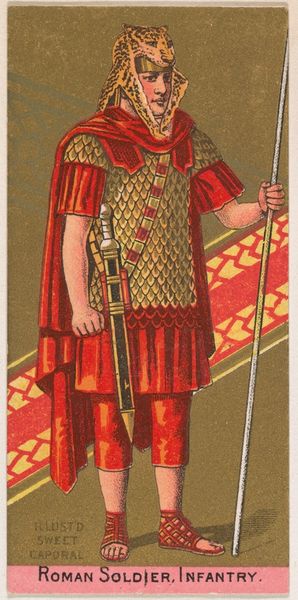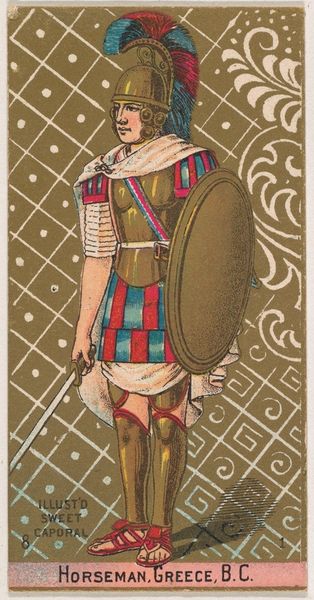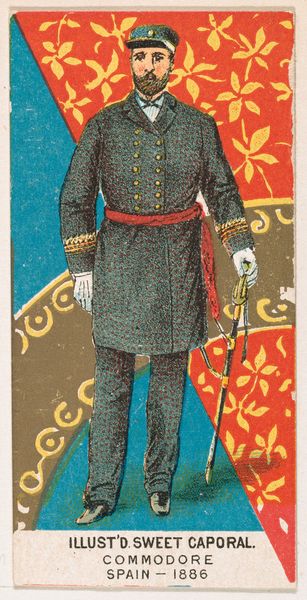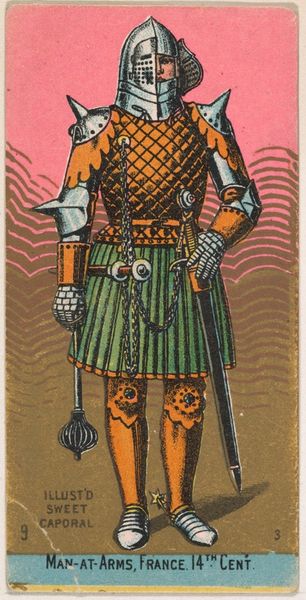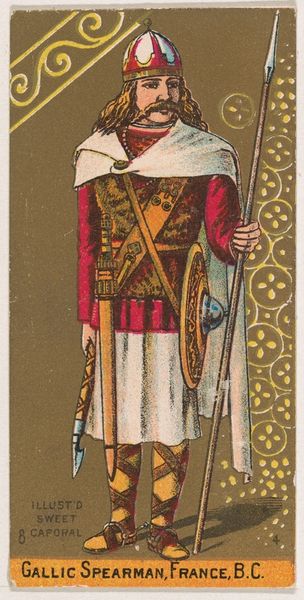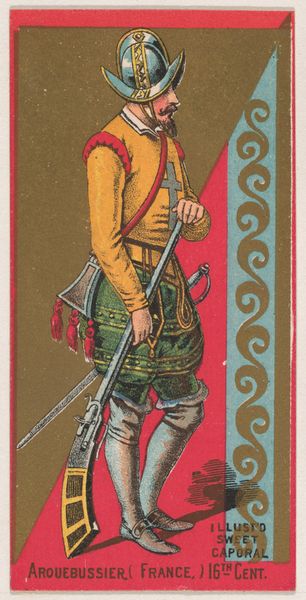
Commander, Greece, B.C., from the Military Series (N224) issued by Kinney Tobacco Company to promote Sweet Caporal Cigarettes 1888
0:00
0:00
drawing, print
#
portrait
#
drawing
# print
#
caricature
#
caricature
#
soldier
#
history-painting
#
academic-art
Dimensions: Sheet: 2 3/4 × 1 1/2 in. (7 × 3.8 cm)
Copyright: Public Domain
Editor: So, we’re looking at “Commander, Greece, B.C.,” a print from 1888, made by the Kinney Tobacco Company. It’s part of a series to promote their Sweet Caporal Cigarettes, which feels a bit odd considering the subject matter. He looks almost… theatrical. What strikes you about it? Curator: The theatricality is key. This isn't history; it's a *presentation* of history filtered through 19th-century eyes, designed to evoke certain ideas. What do you notice about the symbols he's carrying and wearing? Think about the context: a cigarette card. What's being sold here? Editor: He has the helmet, shield, breastplate, axe – the classic warrior look. He seems idealized, like a figure from a play rather than a real commander. Are they selling some association of power, ancient history, or classical ideals to the consumer? Curator: Exactly! The objects point towards a constructed heroism. The image is laden with symbolic references meant to elevate the product. Consider the plumes, the carefully rendered musculature under the armor—everything speaks to an image of authority. Do you see any echoes of this constructed image in our culture today? Editor: Oh, definitely. I see it in how military figures are sometimes portrayed in movies or advertising. It’s less about reality and more about selling a certain image of strength and leadership. I guess that’s why it seemed so…staged. Curator: Precisely. And remember that symbols change their meaning over time. What was once intended to signify honor might, today, be seen as a tool of propaganda. The dialogue continues. Editor: It makes me think about how advertising uses historical imagery and symbols to sell ideas alongside products and it worked. Curator: Symbols and objects of cultural identity continue to shape marketing efforts today.
Comments
No comments
Be the first to comment and join the conversation on the ultimate creative platform.


